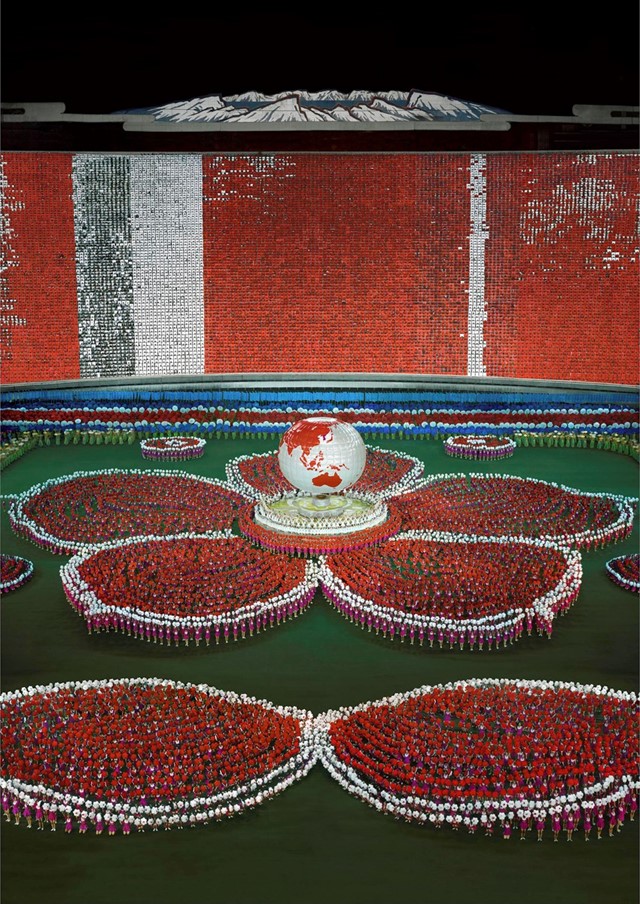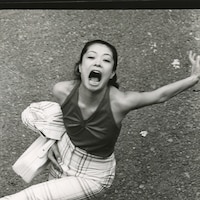This is how Andreas Gursky’s giant-format works featuring panoramic landscapes revolutionised photography
Andreas Gursky’s work will swallow you whole. Not only because of the sheer scale of his photos – some ranging 6 x 15 feet – but because his perfect images open up portals to new worlds.
Across his 38 year career, Gursky’s iconic large-scale works of digitally manipulated, everyday landscapes and cityscapes have revolutionised our perception of photography. Influenced heavily by his photographic predecessors Bernd and Hilla Berch and Sigmar Polke, his photos sit between abstraction and realism and force their viewers to question the consequences of humanity’s actions. From shots of panicked stock trading floors to techno raves, scenes of swelling ocean waves and the hustle of metropolitan life, Gursky has created a visual dialogue critical for understanding the weight of global capitalism including our obsession with consumerism and the ever-increasing speed of globalism.
As one of the world’s most important photographer’s, Gursky has finally received his first ever UK retrospective now on show at London’s Hayward Gallery until 22 April 2018. The show features 60 Gursky photographs from the 80s until now. To help you get into the seminal photographer, here is our guide to Gursky.
HE WAS A STUDENT OF THE DUSSELDORF SCHOOL
Born in Leipzig in 1955, Andreas Gursky was immersed in photography from a young age. His father and grandfather were both commercial photographers, and his dad even set up a commercial photography studio so Gursky could grow up around camera equipment. Though Gursky was determined not to continue his father’s legacy, he ended up studying photography and graduated from the Kunstakademie, Dusseldorf, in 1987. His education makes him a key part of the Dusseldorf School of Photographers: a group of creatives who studied at the Kunstakademie in the mid-70s, under the instruction of influential photographers Bernd and Hilla Becher. The Bechers were widely known for their devotion to German New Objectivity, a modernist movement described by one of its founders as ‘new realism bearing a socialist flavour’. The sober state of the Becher’s influence trickles right through the Dusseldorf School, whose work is characterised by using documentary style photography to shoot banal land and cityscapes from a wide, topographic angle. Other key members of the school include Axle Hütte and Thomas Ruff, both of which Gursky shares a studio with in Germany.
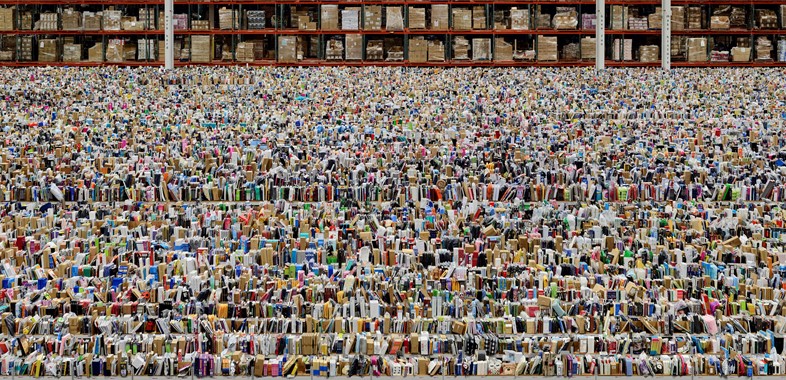
HE TAKES A GOD’S EYE VIEW
Gursky is revered for his monumental use of scale and large format photography influenced by the aforementioned Bernd and Hilla Becher. In the late 80s, he started to increase the size of his work, and by the 90s, he was printing on the world’s largest photographic paper. During the 2000s, he was combining sheets of paper to produce works larger than 6 x 15 feet. In order to consume such a scale, Gursky became God, positioning his lens above what feels like the entire Earth. In his works, people become ants and roads become tracks on a toddler’s toy car set. Gursky’s sweeping landscapes are so wide, you have no choice but to step back to appreciate his prints in their entirety.
On the other hand, his works have such a high resolution that, when viewed close up, the elements gain new clarity. “Amazon” (2016) is a key example of how Gursky masters scale. While you have to view the piece from afar to be consumed by the total narrative told by thousands of Amazon objects (a bold statement on our post-modern obsession with internet consumption), up close the photo is so clear that you can read the titles of books and brand names. In an interview with the Guardian, Gursky describes the scale of distance as a necessary means of objectivity that allows his viewers to draw their own conclusions. “Distance is…... something else I inherited from the Bechers. If a photojournalist was commissioned to document a scene, they would get much closer,”, Gursky tells the Guardian. “But by always keeping a distance, I allow the viewer to come up with their own opinion. While my images are all comprised of many details – which you can explore in depth because of the high resolution – that’s not what they are about. Each one is always a world of its own, created.”
HE’S A MASTER OF (DIGITAL) MANIPULATION
In the early 90s, new digital technologies were emerging for use in the art world which offered photographers a new way to shoot, edit and produce their work. In 1992, Gursky, keen to grow his works into an even larger scale than they were, turned to technology to enhance their size by digitally stitching together images into diptychs and triptychs. In Gursky’s rave photos, like “Tote Hosen” (2000) and “Love Parade” (2001), individual shots of one dancefloor are digitally stitched together so seamlessly that we get one sweeping, all-encompassing panorama of the far-reaching dancefloor.
“...by always keeping a distance, I allow the viewer to come up with their own opinion” – Andreas Gursky (to the Guardian)
HE’S A PIONEER OF PHOTOGRAPHIC ABSTRACTION
Gursky’s works demand subjectivity. Take one of his early works, his 1993 photo “Untitled 1 (Carpet)” as an example. The shot oozes with Gursky’s knack for taking a medium once only dominated by documentary realism, and turning it into abstraction that relies solely on our perception. Without knowing the title, viewers are bewildered by this minimal image. Has Gursky’s lens magnified a piece of carpet or is he flying high above the criss-cross grassland of countryside farm paddocks? It’s the artist’s way of probing our minds between realism and fiction, painting and photography, that make his work so enthralling. Gursky’s composition is another characteristic that lends his work to abstraction. In his photos, elements are made so small, it’s as if they are only there to compose a larger picture. Gursky’s “Pyongyang Vii” (2007/2017) photo taken in North Korea is a testament to this. While the photo is composed of thousands and thousands of people, Gursky’s distance renders them so small that the people no longer feel like subjects with identities, but rather painterly elements that unify in red and white patterns to make up a wider picture of a flower.
GLOBAL CAPITALISM IS A KEY PART OF HIS WORK
If we take a bird's eye view on Gursky’s entire body of work, his oeuvre can be stitched together as a flowing historical, cross-temporal narrative of 25 years worth of global capitalism and consumerism. These are the key themes of his work, so commonly referenced in the artist’s choice of subject: vast factory storage spaces suffocated by man-made objects, frantic stock-exchange offices where people are literally fighting over money, and never-ending industrial apartment buildings. As he takes a backseat to document the reality of these scenes, viewers are confronted with the weight of contemporary globalisation: this is not Gursky’s interpretation of the world, but rather the world sober, as it is. In an interview with the New York Times, Gursky references his “Amazon” (2016) piece as neither “accusing” or a “political statement”, but rather clear reality. “Our world is also seduced by Amazon, because it’s so practical and so quick, and you want something and the next day you have it. This is also the truth,” he tells the New York Times. “I show our contemporary world the way it is.”
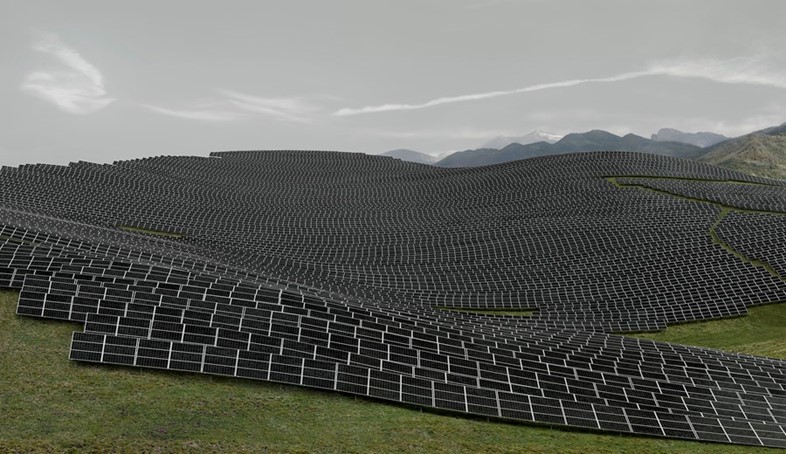
HE’S CHANGED THE WAY WE SEE
Gurksy’s combination of scale, distance, resolution and abstraction have not only changed the way we see but how we understand photography. In our minds, his works play into a concept called ‘double vision’. When we stand further enough away, our minds get to see multiple moments at once, allowing us to virtually exist in more places than one. On a metaphorical level, Gursky’s works are consumed by layers of cultural attitudes and perspectives, also allowing us to consume multiple parts of humanity at once. He has revolutionised the meaning of the medium by forcing us to reconsider the medium’s link to realism and what can actually constitute an image.
HE’S AN AVID TECHNO FAN
It’s no wonder sweaty rave dancefloors are a common feature of Gursky’s photos – the photographer is an avid techno and trance fan and the industrial state of electronic music deeply influences his work. He has shot techno events like Love Parade, May Day festival in Germany, and he even once collaborated with DJ Richie Hawtin in a 2016 show at New York’s Gagosian Gallery. Which was a fusion of abstract-expressionism and techno for the ‘swiping’ generation. Not to mention, Gursky is a close friend of techno pioneer Sven Väth.
WHERE’S GURSKY?
Understanding that his work’s take on a ‘Where’s Wally-esque’ nature, Gursky has started making cameos in is photos. “May Day” (2006) was when Gursky made his first appearance. Cast your gaze over the masses of people that appear in the image, you can find the photographer posing as another smiling reveller. In “Untitled XVI” (2008), a work inspired by Sven Väth’s Cocoon nightclub, Gursky places himself at the front of the photo, crouching as he holds a bit of the honeycomb wall.
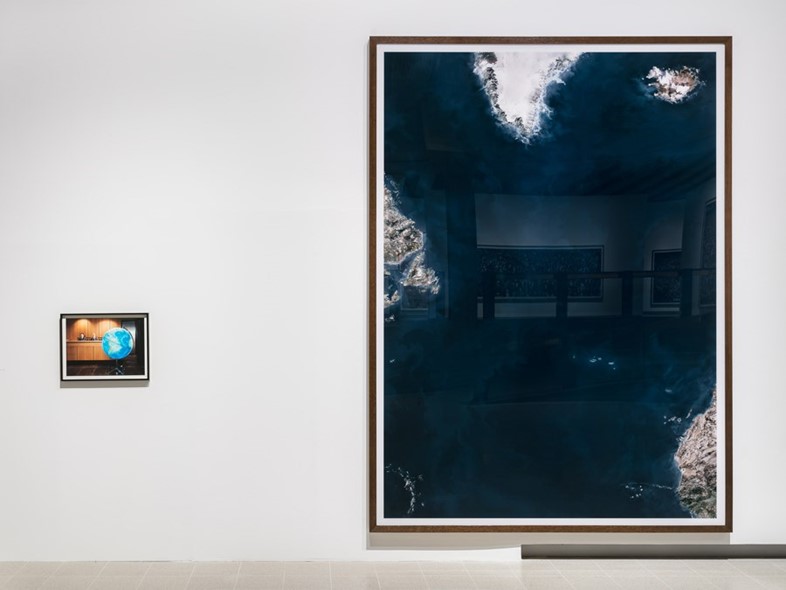
Andreas Gursky is on at the Hayward Gallery in London from 25 January – 22 April 2018. You can find out more here
